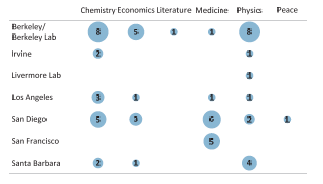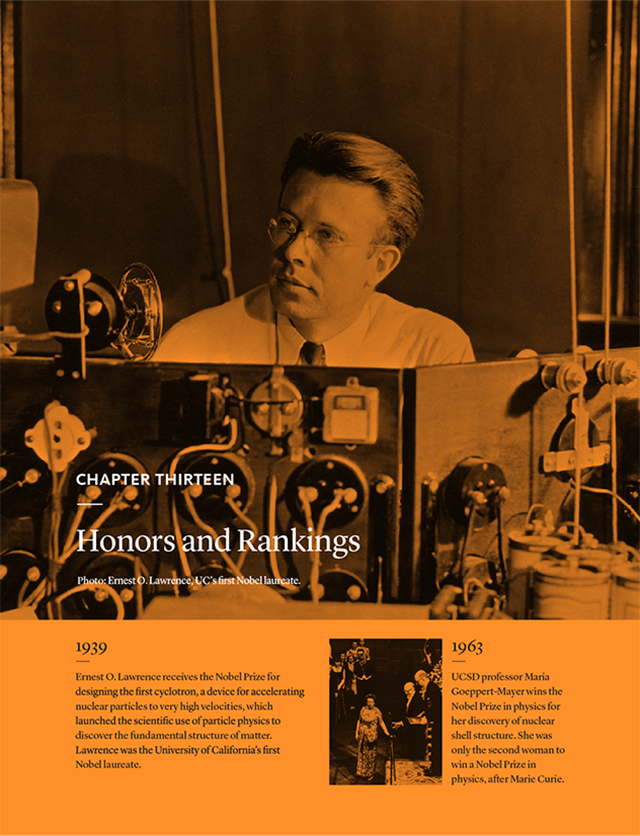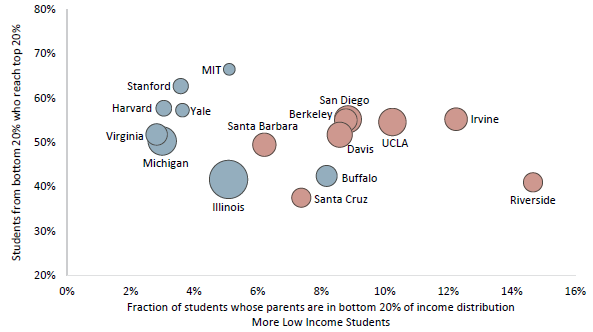History
Decades before U.S. News and World Report and other rankings, Edwin Emery Slosson published a book called Great American Universities in 1910, featuring write-ups on ten leading American institutions of higher education — among them the University of California. Noting UC’s emergence from the “Union of a New England classical religious college and a Morrill Act school of agriculture and mechanic arts,” he wrote: “I know of no other university which cultivates both mechanics and metaphysics with such equal success, or which looks so far into space, and, at the same time, comes so close to the lives of the people; or which excavates the tombs of the Pharaohs and Incas while it is inventing new plants for the agriculture of the future.”
From the first UC Nobel Laureate, (Harold Urey, 1934) to the most recent UC faculty Pulitzer Prize winner (Alan Taylor, 1996 and 2014), UC faculty have a long history of winning prestigious awards spanning disciplines from the sciences to the humanities. Juan Felipe Herrera, professor emeritus in the department of creative writing at UC Riverside, was the nation’s 21st Poet Laureate.
Overview
Honors and rankings are one way to demonstrate the University’s performance and prestige. They reflect reputations and help to position the University nationally and internationally. This chapter first presents metrics of faculty awards and memberships. These represent some of the highest aspirations of research faculty, signaling noteworthy participation and contribution to research and scholarship in a particular area of expertise.
While the University’s faculty demonstrate unparalleled excellence, also noteworthy is the opportunity for students of diverse backgrounds to learn and study with these distinguished researchers and educators. One of the points of pride for the University of California is providing students from the bottom end of the economic spectrum with access to an educational and research environment comparable to the nation’s finest private institutions but on a significantly larger scale.
This chapter features data from the New York Times’s annual College Access Index, showing that the University of California leads the nation in the “Top Colleges Doing the Most for the American Dream.” It also features data from the Equality of Opportunity Project and the associated CLIMB initiative, which leverage national earnings and taxation data to study how colleges affect social mobility.
Universities are ranked in numerous ways, with publishers of rankings choosing criteria based on different audiences and different aims. This chapter highlights just two well-known rankings. U.S. News and World Report (USNWR) focuses on academic reputation, graduation rates, student selectivity and financial resources to create its list of America’s Best Colleges. The Shanghai Academic Ranking of World Universities ranks institutions around the globe, primarily using faculty research productivity. Additional rankings for UC campuses are available at the link in the section below. While recognizing that these rankings may be useful sources of information, UC does not endorse any particular ranking system nor does it have specific goals with respect to any of them.
For more information






